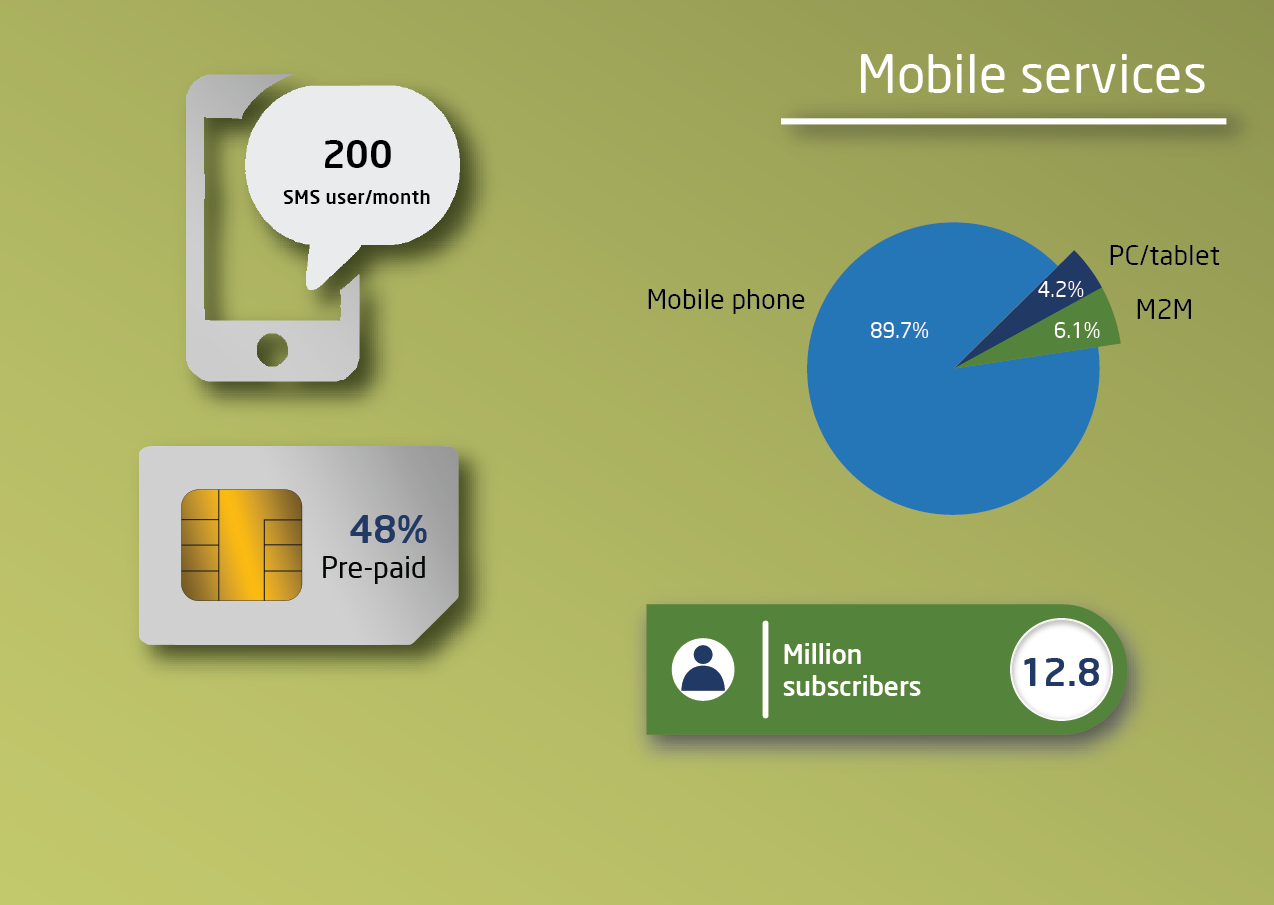At the end of first quarter of 2017 (1Q2017), the penetration rate of the mobile service in Portugal was reported at 164.1 per 100 inhabitants. This figure drops to 124.2 per 100 inhabitants if only mobile stations with actual use are considered, and drops to 111.4 per 100 inhabitants if tablets/computers used for Internet access and mobile stations associated with the machine-to-machine service (M2M) are excluded.
According to data from Marktest's Barómetro de Telecomunicações (Telecommunications Barometer), in 1Q2017, 95.1% of residents in Portugal were customers of the mobile telephone service.
The difference between the penetration rate reported above and the data reported in the Telecommunications Barometer stems from a number of factors, such as:
- there are users who have more than one active card (6.7% of people possessing a mobile phone had more than one active card in March 2017);
- there are new SIM cards activated for exclusive use of data services and Internet access;
- there are active cards used in machines, equipment, vehicles and companies (automatic payment terminals which use the mobile network, alarm equipment, security, telemetry and telematics, etc.).
The downward trend in the quantity of pre-paid plans continued (-2% over the previous quarter). At the end of 1Q2017, the proportion of pre-paid subscribers reached 48%, falling 1.7 percentage points from 1Q2016.
According to Marktest's Barómetro de Telecomunicações (Telecommunications Barometer), in March 2017, approximately 39.7% of residential customers of the mobile telephone service subscribed to this service as part of a bundled offer incorporating services provided at a fixed location.
The number of actual users of typical mobile broadband services (videotelephony, broadband data transmission, mobile television, etc.) rose to 6.6 million (0.4% more than in the previous quarter and 15.8% more than in first quarter 2016), representing 51.5% of mobile stations with actual use. The growth reported in the use of these services (on a year-on-year basis) is associated with the increase in mobile telephone Internet users, 19.3% more than in the first quarter of 2016 (1Q2016) and with smartphone penetration.
The volume of conversation minutes originating on mobile networks decreased by 0.2% versus fourth quarter 2016, increasing by 2.4% compared to first quarter 2016. The year-on-year increase was mainly due to the increase in off-net traffic (+13.1%), following the introduction of offers, especially bundled offers including the mobile service, with calls included and with no distinction in tariffs between on-net/off-net traffic. On-net traffic saw a year-on-year decrease of 4.1%.
Users of the text messaging service (66.6% of all mobile stations with actual use, excluding Internet access cards and equipment connected to M2M communications) sent 12.6% fewer messages compared to first quarter 2016. The average monthly number of messages sent per user of this service was 179 (210 in 1Q2016), representing about 6 messages per day. Message traffic has seen a significant reduction due to the emergence of alternative forms of communication.
Users of the international roaming service outside Portugal represent 6.6% of the total number of mobile stations with actual use. Roaming out traffic increased compared to first quarter 2016, particularly in terms of Internet traffic volume (+92.9%). Roaming in traffic increased significantly compared to the previous quarter. Compared to the same quarter of the previous year, there was also an increase in Internet traffic (up 173.8%).
MEO continues to be the main provider (43.9% of active mobile stations with actual use), followed by Vodafone Portugal (30.7% of active mobile stations with actual use). NOS, with a share of 23.5%, was the provider that reported the largest increase in the number of stations with actual use during the period being reported.
Infographic about mobile services
Consult the statistical report:
- Mobile services - 1st quarter 2017 https://www.anacom.pt/render.jsp?contentId=1414862





